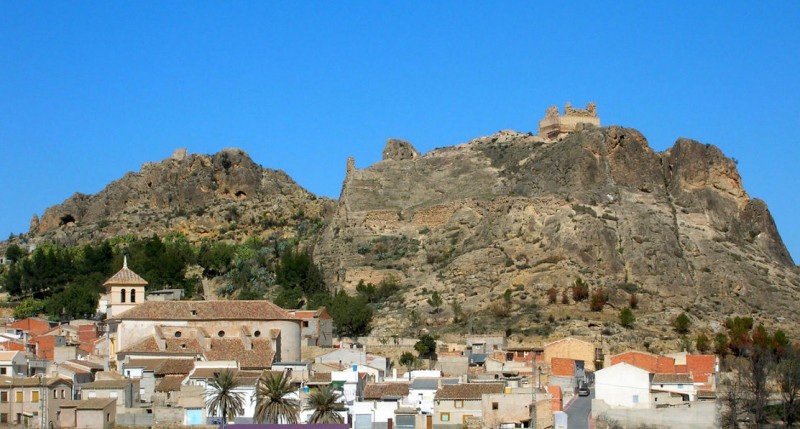- Region
- Águilas
- Alhama de Murcia
- Jumilla
- Lorca
- Los Alcázares
- Mazarrón
- San Javier
-
ALL AREAS & TOWNS
- AREAS
- SOUTH WEST
- MAR MENOR
- MURCIA CITY & CENTRAL
- NORTH & NORTH WEST
- TOWNS
- Abanilla
- Abarán
- Aguilas
- Alamillo
- Alcantarilla
- Aledo
- Alhama de Murcia
- Archena
- Balsicas
- Blanca
- Bolnuevo
- Bullas
- Cañadas del Romero
- Cabo de Palos
- Calasparra
- Camping Bolnuevo
- Campo De Ricote
- Camposol
- Canada De La Lena
- Caravaca de la Cruz
- Cartagena
- Cehegin
- Ceuti
- Cieza
- Condado de Alhama
- Corvera
- Costa Cálida
- Cuevas De Almanzora
- Cuevas de Reyllo
- El Carmoli
- El Mojon
- El Molino (Puerto Lumbreras)
- El Pareton / Cantareros
- El Raso
- El Valle Golf Resort
- Fortuna
- Fuente Alamo
- Hacienda del Alamo Golf Resort
- Hacienda Riquelme Golf Resort
- Isla Plana
- Islas Menores & Mar de Cristal
- Jumilla
- La Azohia
- La Charca
- La Manga Club
- La Manga del Mar Menor
- La Pinilla
- La Puebla
- La Torre
- La Torre Golf Resort
- La Unión
- Las Palas
- Las Ramblas
- Las Ramblas Golf
- Las Torres de Cotillas
- Leiva
- Librilla
- Lo Pagan
- Lo Santiago
- Lorca
- Lorquí
- Los Alcázares
- Los Balcones
- Los Belones
- Los Canovas
- Los Nietos
- Los Perez (Tallante)
- Los Urrutias
- Los Ventorrillos
- Mar De Cristal
- Mar Menor
- Mar Menor Golf Resort
- Mazarrón
- Mazarrón Country Club
- Molina de Segura
- Moratalla
- Mula
- Murcia City
- Murcia Property
- Pareton
- Peraleja Golf Resort
- Perin
- Pilar de la Horadada
- Pinar de Campoverde
- Pinoso
- Playa Honda
- Playa Honda / Playa Paraíso
- Pliego
- Portmán
- Pozo Estrecho
- Puerto de Mazarrón
- Puerto Lumbreras
- Puntas De Calnegre
- Region of Murcia
- Ricote
- Roda Golf Resort
- Roldan
- Roldan and Lo Ferro
- San Javier
- San Pedro del Pinatar
- Santiago de la Ribera
- Sierra Espuña
- Sucina
- Tallante
- Terrazas de la Torre Golf Resort
- Torre Pacheco
- Totana
- What's On Weekly Bulletin
- Yecla


- EDITIONS:
 Spanish News Today
Spanish News Today
 Alicante Today
Alicante Today
 Andalucia Today
Andalucia Today
A history of Calasparra
Calasparra boasts 100,000 years of history and pre-history
Calasparra is a town of sanctuary and has been so since the earliest signs of human occupation in the Region of Murcia, offering safety and shelter in the rocky outcrops and caves which characterise its central area where the Sierra del Puerto and the Sierra del Molino are divided by the River Segura and the River Argos.
Prehistoric Calasparra
Prehistoric man sought shelter, water and natural food sources, finding these in several locations throughout the municipality at different stages.
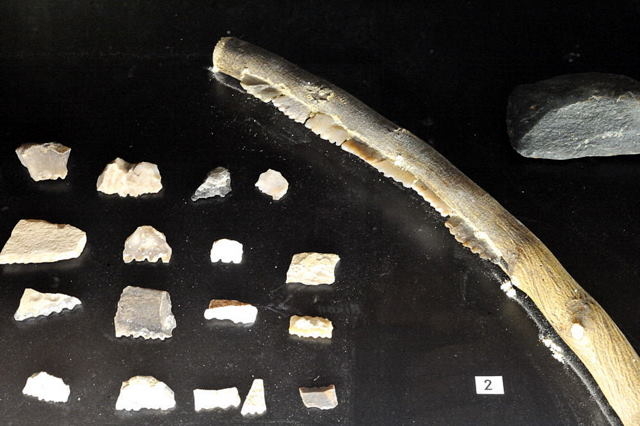
The municipal archaeology museum (Museo Arqueológico la Encomienda) has a sizeable collection of tools and finds from the various sites, which indicate that there was human activity here 100,000 years ago. Later on, there is evidence of Neolithic occupation (6000 - 2500 BC) on the banks of the Segura at La Presa, where grave goods and tools have been unearthed.
One of Calasparra´s most important sites is that of the Abrigo del Pozo, or Cueva de los Monigotes, in the Sierra del Molino, which has been recognized by UNESCO as a World Heritage Site. This site contains cave paintings which are believed to date from around 4000 years ago and which depict both animals and human beings among other less definable images. It´s a difficult site to access as it lies at the foot of a steep-sided canyon, but can be reached with the help of a guide.
Calasparra was also home to human settlements during the Bronze Age, which lasted from approximately 3200 to 600 BC. and the excavation of sites found at El Castillico and El Cerro de la Virgen has revealed and various metal objects.
The Iberians in Calasparra
The Iberian culture became dominant in the eastern part of the Iberian Peninsula in the 5th century BC between 525 and 50 BC, when the population became totally absorbed into the process of Romanization following the invasion of the Romans in 209 BC.
The Iberians as a people were a technologically sophisticated culture, and in the numerous sites they occupied within what is now Murcia a large number of remains and artefacts have been uncovered testifying to their skill and artistic abilities. They tended to favour locations which could be defended easily and built quite substantial settlements, remains of which have been uncovered in Calasparra in the areas of Cerro de la Virgen, Terratremo and Cabezo de las Juntas. For more detailed information about who they were and their culture, click The Iberians in Murcia.
The remains found in Calasparra of this culture include weapons such as “falcatas” (Iberian swords), daggers and lances, as well as fragments of ceramics showing the influence of the Greeks. The Greeks traded heavily throughout the Mediterranean basin, and their ceramics are a common feature of sites excavated which date to this period. The River Segura was one of the main trading routes they used on their way to inland areas like Jaén, hence evidence of their ceramics have been found in most of the towns and settlements along the river.
Calasparra under Roman rule
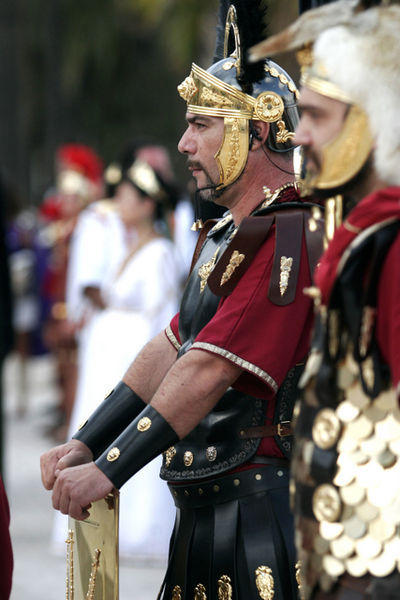 The Mediterranean, whilst also a major trading route, was also a source of constant power struggles, one of the most important being between the Romans and the Carthaginians, a great nation based in Carthage on the African coast after being founded by the Phoenicians, who had in turn been pushed out of their own homelands in modern-day Libya.
The Mediterranean, whilst also a major trading route, was also a source of constant power struggles, one of the most important being between the Romans and the Carthaginians, a great nation based in Carthage on the African coast after being founded by the Phoenicians, who had in turn been pushed out of their own homelands in modern-day Libya.
The battles between these great superpowers culminated in the Punic Wars. The Carthaginians were pushed further south and established new bases in what had been former trading settlements, and in southern Spain they occupied Cartagena, previously just a small trading settlement known as Mastia.
This effectively severed Greek trading routes to the Iberian towns and settlements in Murcia, including Calasparra, from around 237 BC, when Hamilcar Barca undertook his "peaceful occupation" of Cartagena. However, his son-in-law, Hannibal, made the mistake of breaking a territorial agreement with Rome and sacked Sagunto before setting off across the Alps to attack Rome directly, a journey from which he never returned.
Taking advantage of his absence, the Romans invaded Cartagena in 209 BC and the process of Romanization began. This process was achieved swiftly in Calasparra due to the presence nearby of the important town of Begastri (Cehegín), as is shown by the remains found at the Cerro de la Virgen.
During the Roman occupation agricultural activity in the area expanded enormously, the rural villas at Casica Valero and Altos del Valentín being clear examples of how Roman farming was organized. At the same time, the road network extended across the entire peninsula and the growth of Calasparra was due in no small part to the fact that various routes converged in what is now the municipality, the most important being the main route from the eastern coast to Andalucía.
The rise of the Visigoths
When the western Roman Empire fell in 476 with the deposition of the last Emperor Romulus Augustus, the Visigoths occupied almost all of Hispania (the Iberian Peninsula).
There is little in the way of documented evidence from this period, but it is almost certain that the Roman settlements in Calasparra came under the control of the Visigoths, due to their proximity to Begastri, and continued to be mainly rural in nature, although by this point the spread of Christianity and a certain fusion of the native population with the Romans had changed the identity of the population and its practices and customs.
Calasparra in the Early Middle Ages
The power vacuum provoked by the decline of the Roman Empire and the fragmented rule of the Visigoths resulted in a widespread occupation of the Iberian Peninsula by the Moors, who arrived from Africa.
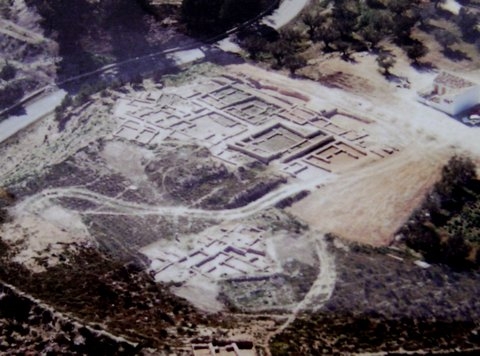
In 713 AD, the Pact of Tudmir brought the territories of Calasparra under Moorish control and although there is no documented evidence of their occupation, archaeological findings show that they were present in Calasparra between the 8th and 12th centuries.
The population lived in small farming communities such as the one at Villa Vieja, close to the river on a strategic rocky outcrop and protected and overseen by fortified structures.
The remains of the fortress in Calasparra are believed to date from the 12th century, and the fortification protected those who lived on the nearby farms from the Christian raids which became increasingly regular in the early part of the 13th century. As well as being a defensive necessity, though, the castle also had an administrative function, and the farms surrounding it were organized from here.
The Villa Vieja in Calasparra
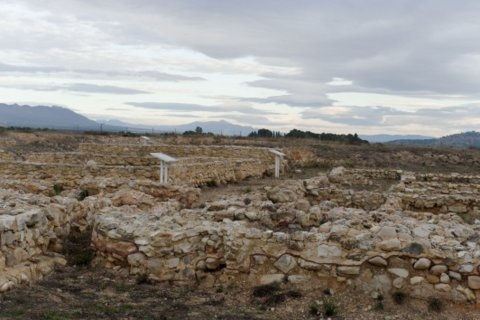 The site at Villa Vieja consists of the remains of an old Moorish settlement from the time of the caliphs in the 12th and 13th centuries.
The site at Villa Vieja consists of the remains of an old Moorish settlement from the time of the caliphs in the 12th and 13th centuries.
By 1243, the Christian forces of the Kingdom of Castile had pushed deep into southern Spain, the Moors weakened by an ineffective system of Taifas, and a power struggle in Morocco which provoked the withdrawal of armies to fight in Africa. This left the door open for the Castilian forces of the Reconquista to take much of Southern Spain, leaving only the Moorish Kingdom of Granada intact.
In 1243 the treaty of Alcáraz handed over control of what is now Murcia to Castile, laying out terms which included respect for the religious practices of the Moorish families who lived there. However, under the rule of Alfonso X these terms were not respected, leading to a Moorish uprising which was quashed in 1266 by Jaime I of Aragón, the father-in-law of Alfonso X.
The Villa Vieja was abandoned at this point, the rebels killed or thrown out of the area, and Calasparra came under Christian control: It remained in its current location from this point onwards, although it was only in 1289 that the new town really began to take shape.
Calasparra and the Order of San Juan
 Military and religious Orders played an important part in the Reconquista of the peninsula in the 13th century, contributing valuable knights and horsemen as well as supporting the monarchy in the complicated power struggles whch constituted medieval politics. In recognition of their services they were rewarded with land and townships and one such township was Calasparra, which was entrusted by Sancho IV of Castile (son and successor of Alfonso X ) to the Order of San Juan de Jerusalén in 1289.
Military and religious Orders played an important part in the Reconquista of the peninsula in the 13th century, contributing valuable knights and horsemen as well as supporting the monarchy in the complicated power struggles whch constituted medieval politics. In recognition of their services they were rewarded with land and townships and one such township was Calasparra, which was entrusted by Sancho IV of Castile (son and successor of Alfonso X ) to the Order of San Juan de Jerusalén in 1289.
This Order maintained its control over the town until the 19th century, except for a brief period in the early 14th century when Murcia was occupied by the Kingdom of Aragón and another in the 15th century during the rebellion of Fajardo “El Bravo”. Throughout the 14th century Calasparra remained sparsely populated: many of the Moorish inhabitants were evicted following the Moorish uprising of 1264-66, and the situation was not helped by the raids from the neighbouring kingdom of Granada and outbreaks of plague.
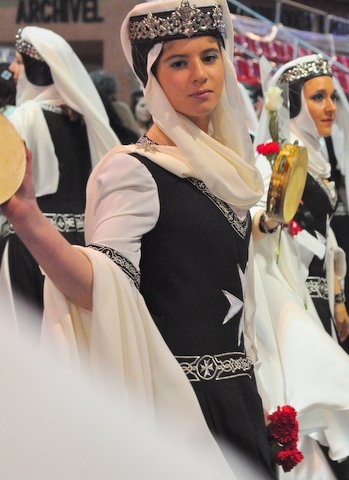 Freed of the obligation to share with a native population, the Order took advantage of the richness of the depopulated land. It wasn’t until the 15th century that they decided to repopulate the area with Christian tenants, when a municipal charter was signed by the leader of the Order, Gonzalo de Saavedra. Even so, the privileges offered to those who settled in the town were few and far from generous, and the town council’s independence and freedom were significantly more limited than in other Christian communities within the Murcia which belonged to different Orders, also trying to attract settlers and tenants.
Freed of the obligation to share with a native population, the Order took advantage of the richness of the depopulated land. It wasn’t until the 15th century that they decided to repopulate the area with Christian tenants, when a municipal charter was signed by the leader of the Order, Gonzalo de Saavedra. Even so, the privileges offered to those who settled in the town were few and far from generous, and the town council’s independence and freedom were significantly more limited than in other Christian communities within the Murcia which belonged to different Orders, also trying to attract settlers and tenants.
Autonomy was restricted and the population depended on the Order, which kept the best land, the town’s oven and the flour mill for itself. The Order also owned land in Archena, but it maintained its headquarters in Calasparra.
After 1492, when the Moorish reign in Granada was finally ended, there were no more raids from the neighbouring Nazarí kingdom and so began a period of peace and growth. In time, with the arrival of more inhabitants, the social organization of the area also became more stable.
(Images from the Caravaca de la Cruz Fiestas de la Santísima Cruz, showing the cross of the order of San Juan, albeit rather romanticised in its depiction.)
Calasparra expands: 1500-1800
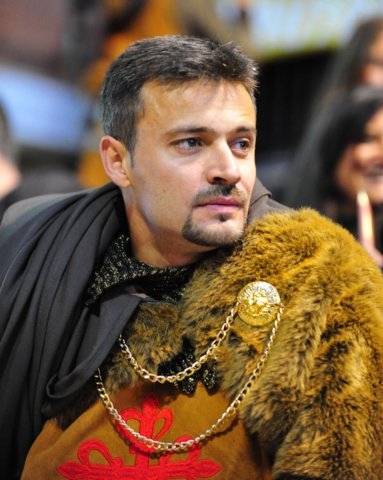 Between 1500 and 1800 the population of Calasparra quadrupled, rising from 700 to more than 2,900. The basis for the town’s development was its economy, which benefited from the fertile land in the area and the kindly climate, enabling irrigation crops to be grown alongside those which could survive in non-irrigated conditions.
Between 1500 and 1800 the population of Calasparra quadrupled, rising from 700 to more than 2,900. The basis for the town’s development was its economy, which benefited from the fertile land in the area and the kindly climate, enabling irrigation crops to be grown alongside those which could survive in non-irrigated conditions.
The main subsistence crops were leaf vegetables, fruit, wheat and barley, while silk and salsola were grown for export to other areas. The mountains provided wood (for building and firewood), esparto grass and hunting, and on top of all this there were the salt flats of the Quipar and various sulphur deposits. As a result the local economy was self-sufficient but not isolated, since it was still on one of the main routes between the eastern coast and Andalucía.
Calasparra in conflict
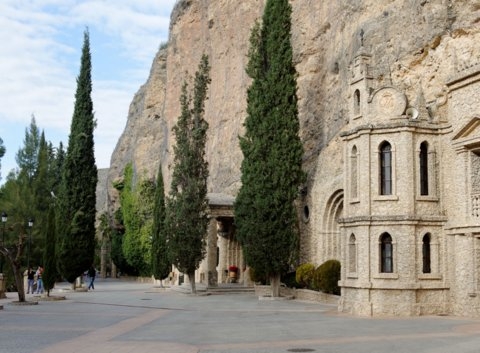 As in the other towns of the Region of Murcia, the political history of Calasparra is marked by a number of conflicts. Firstly, there were constant power struggles between the townspeople and the Order of San Juan, revolving around the control of administrative privileges, and secondly there was repeated infighting among the most powerful families for representation on the council, with rival factions forming alliances and rivalries in their struggle for dominance.
As in the other towns of the Region of Murcia, the political history of Calasparra is marked by a number of conflicts. Firstly, there were constant power struggles between the townspeople and the Order of San Juan, revolving around the control of administrative privileges, and secondly there was repeated infighting among the most powerful families for representation on the council, with rival factions forming alliances and rivalries in their struggle for dominance.
In Calasparra the supremacy of the Melgarejo family was indisputable due to the fact that they owned much of the irrigated land in the Segura flood plain, and other families such as the Corbaláns, the Pascuals and the García Hervas formed groups around them.
Calasparra in the 18th Century
 Calasparra remained loyal to Felipe V during the War of Succession, in line with the rest of the Region of Murcia, but the town’s economic prosperity and its population growth were truncated. During the war itself the fact that it was on the route between Andalucía and Valencia meant that armies passed through it, looting resources and recruiting the young men.
Calasparra remained loyal to Felipe V during the War of Succession, in line with the rest of the Region of Murcia, but the town’s economic prosperity and its population growth were truncated. During the war itself the fact that it was on the route between Andalucía and Valencia meant that armies passed through it, looting resources and recruiting the young men.
Calasparra took a long time to recover due to a run of poor harvests, various epidemics and public works and infrastructures being neglected. In 1731 the grain deposit of the Order of San Juan, known as the “Encomienda”, was built in an attempt to alleviate the effects of the grain shortage as far as possible, and at the same time the divide between rich and poor, which was very marked due to the town’s previous prosperity, caused conflicts among the inhabitants.
Calasparra in the 19th Century
 The early 1800s were a time of more epidemics and poor harvests, and the townspeople built more deposits including the Casa de Grano del Conde del Valle de San Juan (1808).
The early 1800s were a time of more epidemics and poor harvests, and the townspeople built more deposits including the Casa de Grano del Conde del Valle de San Juan (1808).
But the War of Independence, or Peninsular War, added further misery to the plight of Calasparra. In 1812 French soldiers caused a vast amount of damage to the town, destroying many buildings, including the Iglesia of San Pedro.
In the middle of the 19th century agriculture was more intensified and specialized, and new crops were introduced, such as fruit and vegetables. Production was boosted by the use of special fertilizers, and the amount of farmland increased. As a result the population grew, reaching over 5,000 by 1887.
The Order of San Juan was forced to relinquish its control over the town between 1836 and 1841, with members of the most important families in the town taking over its administration. After this, the Melgarejo family became the most powerful in Calasparra and took the hereditary title of Conde del Valle de San Juan.
Calasparra in the 20th century
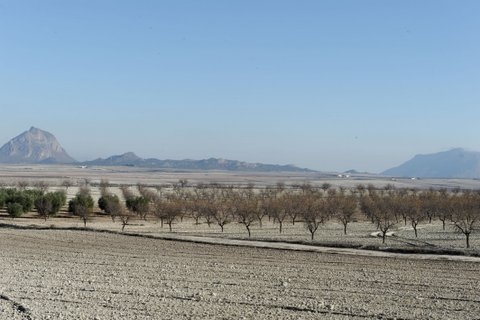 The early years of the 20th century throughout Spain were unsettled, and political instability, an economic downturn and conflict created poverty. In response, thousands left Murcia to work in France as agricultural labourers.
The early years of the 20th century throughout Spain were unsettled, and political instability, an economic downturn and conflict created poverty. In response, thousands left Murcia to work in France as agricultural labourers.
Much of the North-west was depopulated as the physically fit sought work elsewhere, but in time those who returned brought finance, investing in farms and land and growing new fruit crops, and this led to the beginnings of the fruit canning industry which helped Calasparra to grow in the 20th century. The climate and availablility of water helped to fuel the rice growing industry and in 1982 the famous Calasparra rice was granted Designation of Origin status.
Although agriculture continues to be the most important sector these days, residential tourism has fuelled the construction of two urbanisations and rural tourism has become more important due in part to the popularity of the Sanctuary of the Virgen of la Esperanza and the surrounding picnic areas.
Cartagena
El Carmoli
Islas Menores and Mar de Cristal
La Manga Club
La Manga del Mar Menor
La Puebla
La Torre Golf Resort
La Union
Los Alcazares
Los Belones
Los Nietos
Los Urrutias
Mar Menor Golf Resort
Pilar de la Horadada
Playa Honda / Playa Paraiso
Portman
Roldan and Lo Ferro
San Javier
San Pedro del Pinatar
Santa Rosalia Lake and Life resort
Terrazas de la Torre Golf Resort
Torre Pacheco
Aledo
Alhama de Murcia
Bolnuevo
Camposol
Condado de Alhama
Fuente Alamo
Hacienda del Alamo Golf Resort
Lorca
Mazarron
Puerto de Mazarron
Puerto Lumbreras
Sierra Espuna
Totana
Abaran
Alcantarilla
Archena
Blanca
Corvera
El Valle Golf Resort
Hacienda Riquelme Golf Resort
Lorqui
Molina de Segura
Mosa Trajectum
Murcia City
Peraleja Golf Resort
Ricote
Sucina
Condado de Alhama
El Valle Golf Resort
Hacienda del Alamo Golf Resort
Hacienda Riquelme Golf Resort
Islas Menores and Mar de Cristal
La Manga Club
La Torre Golf Resort
Mar Menor Golf Resort
Mazarron Country Club
Mosa Trajectum
Peraleja Golf Resort
Santa Rosalia Lake and Life resort
Terrazas de la Torre Golf Resort
La Zenia
Lomas de Cabo Roig

CAMPOSOL TODAY Whats OnCartagena SpainCoronavirusCorvera Airport MurciaMurcia Gota Fria 2019Murcia property news generic threadWeekly Bulletin

